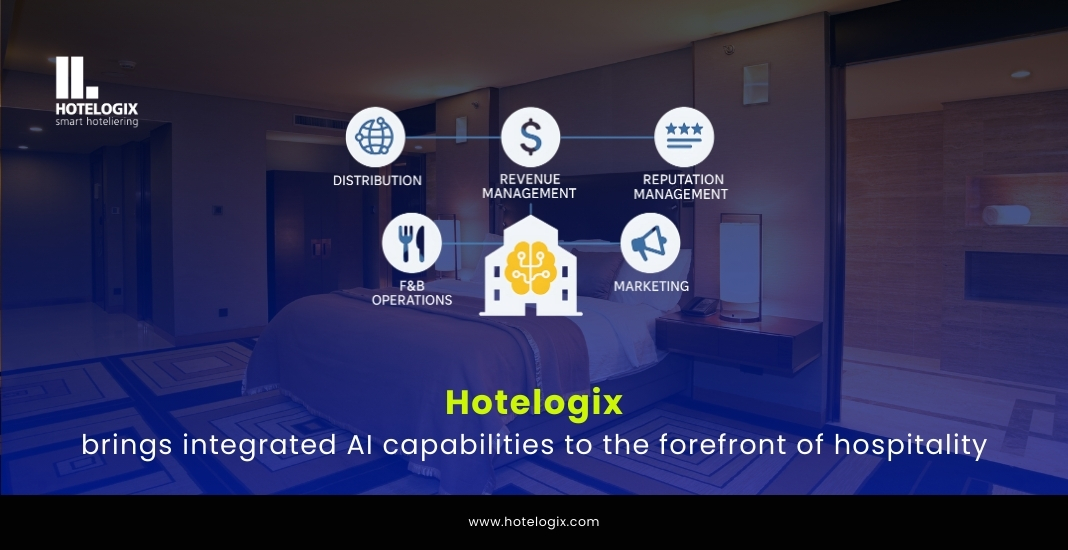

In today's consumer-driven marketplace, the hospitality industry faces the formidable challenge of adapting its content strategy to meet the evolving preferences of potential guests. This shift towards a consumer-led focus demands that hotels not only showcase content that resonates with what consumers want to see but also navigate the complexities of distributing this content across an expanding array of booking platforms. The task of content management is further complicated by the need to synchronize with global partner's varying requirements. This creates a scenario where managing content becomes as dynamic and multifaceted as the consumers it aims to engage.
The complexity of content
The digital age has ushered in an era where the consumer is king, dictating the content they wish to engage with. This has translated into an insatiable demand for specific, granular content in the hospitality sector, pushing hotels to their limits regarding content creation, curation, and distribution.
The challenge is compounded when considering the various content and image requirements set forth by global partners, leading to a frenzied exchange of data that often feels like a Herculean task to manage. But what lies at the root of this complexity?
Legacy systems and content management
Much of the complexity is partly due to an industry comprised of legacy systems initially built years ago. Global Distribution Systems (GDS) is a good example. Initiated by major airlines decades ago, GDS was built for their internal reservation employees and travel agents.
Users leveraged their travel knowledge to learn and understand GDS-centric data inquiry and response information. Back then, the content was written for a different audience trained to use abbreviated formats, codes, and systems (travel agents, internal agents).
Typically, there is no single source of truth regarding hotel information. This includes the hotel and its outlets, such as restaurants, bars, spas, etc. Different systems like CRS, CMS, and PMS may have multiple content sources, leading to inconsistent content across various platforms.
Although the industry has improved in addressing these issues over the years, legacy database complexities and connectivity challenges persist. We are now seeing some companies developing innovative solutions capable of being the source of truth of all content for hotels & resorts and using AI to help hotels improve the quality of their content.
Despite these challenges, the hospitality industry is making significant strides in adopting innovative solutions to overcome these obstacles and provide a better experience for its guests.
Today, the narrative has shifted to a direct-to-consumer model, where the limitations and restrictions of these legacy systems increasingly clash with the demands for real-time, relevant content.
Elevating content quality and relevancy
Content narrates a hotel's story to potential guests. Yet, curating content that aligns with the myriad requirements of various booking channels poses a considerable challenge. Each channel's unique demands—from images and videos to character-limited descriptions and specific attribute listings—require a meticulous approach to content management.
At the heart of this challenge is the need to keep content current and reflective of the high standards that consumers expect, necessitating a considerable investment in time and resources.
The misnomer of static vs. dynamic content
In the traditional sense, hotel content is classified into static and dynamic. Static content refers to factual and photographic information about a hotel, while dynamic content encompasses rates, inventory, and promotions.
However, classifying content as static can be misleading as it does not reflect the frequency of changes in content. Providing up-to-date and detailed information is critical for today's consumers, who are looking for more specific and timely information than ever before.
Hotels often struggle to keep up with the overwhelming amount of essential and time-sensitive content required and the ever-changing requirements from distribution and online partners. As a result, the distinction between static and dynamic content is becoming increasingly blurred as consumers now seek detailed and up-to-date information across all types of content.
Another challenge is the diversity of third-party distribution channels and OTAs, Social Media, Short Video Apps, etc.- and the need to have different content for different channels. With online channels enabling/running special events and different promotional programs throughout the year, hotels may need to create and distribute short-lived content— eg. some content just for a promotion on a certain channel. This is particularly common in Asia.
The essential role of content distribution
Consumers often visit multiple online booking sites, and discrepancies in content across these platforms can cause confusion. Spreading content across different global channels can unintentionally introduce issues, such as essential information, including room names, not being properly shared or displayed.
Apart from confusion, in some cases, if the hotel's latest content is not updated, it can lead to guest complaints for eg. If the pool is closed or parking is no longer free. The hotel updates its content, which may not always be accurately reflected across all channels. This can lead to unhappy guests and potential claims from guests. On the other hand, if your updated pictures showing the latest renovation are not on the OTA, you're losing bookings
The root of these challenges lies in the systems used to distribute content to booking platforms, which were initially designed for a non-consumer audience, i.e., the GDS systems. These systems struggle with limitations like text length and character restrictions.
Enhancing content quality becomes crucial as marketing and e-commerce platforms grow in influence. Without advanced content management tools that support cross-channel functionality and scalability, content updates can become inefficient and prone to errors, complicating the booking process.
Striving for content parity
The concept of content parity, though less discussed than rate parity, is equally critical in ensuring a level playing field across all booking channels. With their capability to quickly update and add new content, online booking websites often outpace direct hotel channels regarding freshness and relevancy.
This imbalance can sway consumers towards third-party sites, emphasizing the need for hotels to adopt strategies that prioritize up-to-date, engaging content on their direct channels.
A strategic approach to content management
Effective content management in the hospitality industry begins with a clear, cohesive content strategy. This strategy should encompass all content creation, curation, distribution, and regular content score reviews to elevate content quality, treating content as a valuable asset rather than a mere operational task.
By adopting a holistic view of content management, hotels can identify and address inconsistencies, streamline processes, and ultimately create a more engaging and informative online presence.
Viewing content as a valuable investment rather than a mere business expense is crucial. By adopting a comprehensive approach to content creation, identifying redundancies and inconsistencies becomes easier, creating opportunities to address these issues.
Asign a content champion
A hotel's content must evolve frequently to maintain its relevance. Appointing a person responsible for the content and outlining their role, strategy, and supervisory duties is important for any content strategy: it sets the course for utilizing content to achieve business goals and fulfill consumer demands.
Key takeaways
- Prioritize investing in technology or services that manage images, content, and translations. Explore tools that enable cross-channel content delivery and distribution.
- Create versatile and reusable content instead of creating it with a single channel, product, or locale in mind.
- Conduct frequent content audits.
- Engage your booking team or call center, which directly interacts with guests facing content issues on your site. Use this feedback to address any shortcomings.
Conclusion
Outdated systems will be phased out, standards will advance, and technology will improve. The journey toward streamlining hotel content management is complex, marked by the need to navigate legacy system constraints, elevate content quality, and meet the ever-evolving expectations of the modern traveller.
By embracing technology, prioritizing content relevancy, recognizing the dynamic nature of content, implementing efficient distribution strategies, and striving for content parity, hotels can address the challenges of content chaos head-on.
In doing so, they enhance their digital presence and forge stronger connections with potential guests, driving engagement, bookings, and loyalty. The future of hotel content management demands agility, innovation, and a deep understanding of consumer behavior.







